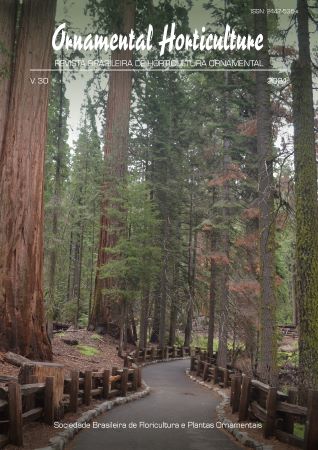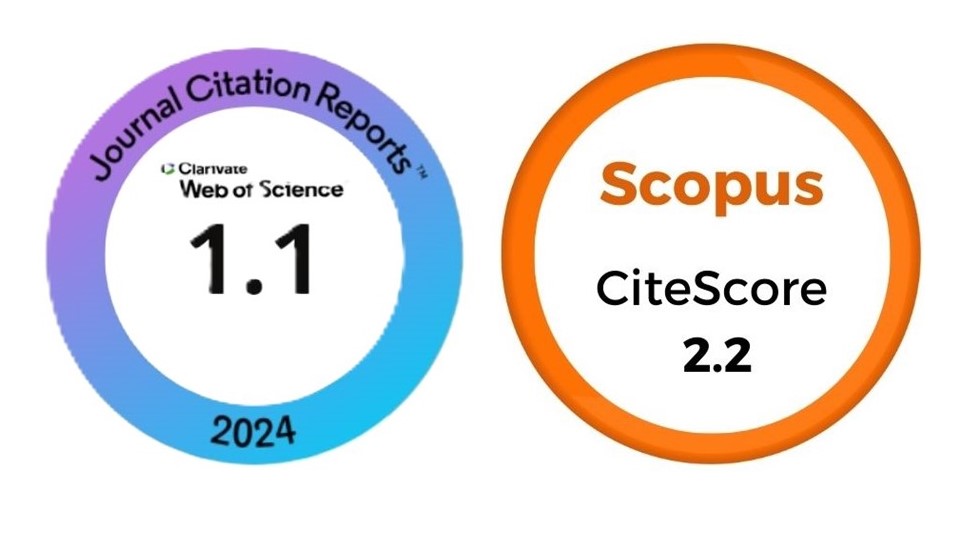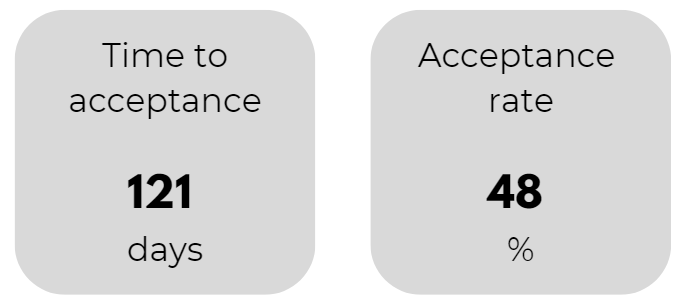Diagnosis of the production chain of flowers, turfgrass, and ornamental plants: proposal for an innovation agenda
DOI:
https://doi.org/10.1590/2447-536X.v30.e242792Keywords:
floriculture, innovation agenda, sustainabilityAbstract
Sectoral and Thematic Chambers are forums for dialogue created by the Ministry of Agriculture and Livestock (MAPA), through which greater interaction with productive chains is sought, as well as the identification of opportunities and the definition of priority actions for developing Brazilian agriculture. The Thematic Chambers can contribute to the development of agriculture by identifying demands from the productive sector and linking them to proposals for research, development, and innovation by creating innovation agendas. For that, the analysis of productive chains and their practices allows a better understanding of agribusiness, which consequently enables the development of effective strategies to promote the growth and development of a sector. The objective of the agenda in Flower, Turfgrass, and Ornamental Plant is to present an analysis of the main problems and opportunities for innovation in the productive chains. A diagnosis of the current situation focusing on a vision for the future was required to prepare this Innovation Agenda. The methodological approach was divided and conducted through different analyses: a) Analysis of the evolution of the Flower and Ornamental Plant Market; b) Analysis of contributions, impact, and expectations of the links in the production chain; c) Mapping of human capital in Brazilian science with the potential to contribute to technological innovations for the market of flowers, grasses, and ornamental plants. The Innovation Agenda prioritizes the most relevant obstacles, establishes their level of importance, and identifies ten significant Innovation Challenges to be addressed by the public and private sectors of the country. Through the agenda, strategic actions are suggested for research, technology transfer, and public policies, which are essential for the technological development of the sector, without neglecting its socioeconomic and environmental sustainability. For each Innovation Challenge, Strategic Actions were suggested to be pursued, and Brazil has the technical competence distributed across the country, in nationally recognized universities and research institutes and enterprises.
Downloads
References
ANACLETO, A.; BORNANCIN, A.P.A.; MENDES, S.H.C.; SHEUER, L. Between flowers and fears: the new coronavirus pandemic (COVID-19) and the flower retail trade. Ornamental Horticulture, v.27, n.1, p.26-32, 2021. https://doi.org/10.1590/2447-536X.v27i1.2232
CASTRO, A.C.R.; CORREIA, D.; SOUZA, F.V.D.; SOUZA, E.H.; FRANCO, J.; CAVALCANTI, T.B.; SILVA, D.A. Brazilian ornamental phytogenetic resources in Embrapa germplasm banks: obstacles and opportunities. Ornamental Horticulture, v.28, n.4, p.396-406, 2022. https://doi.org/10.1590/2447-536X.v28i4.2549
CUNHA NETO, A.R. Artificial Intelligence as a tool in floriculture research. Ornamental Horticulture, v.29, n.4, p.428-429, 2023.https://doi.org/10.1590/2447-536X.v29i4.2689
FRANCO, L.M.N.; VENDRUSCOLO, E.P.; BASTOS, F.E.A.; CUNHA, P.S.J.; MARTINS, M.B.; VETRUVE, I.F. Seasonality of chrysanthemum commercialization in the west region of São Paulo: the case of breeders. Ornamental Horticulture, v.29, n.4, p.430-437, 2023. https://doi.org/10.1590/2447-536X.v29i4.2585
IBRAFLOR. O Mercado de Flores no Brasil. 2022. 3p. Available at: https://www.ibraflor.com.br/_files/ugd/5bcab9_1de516ce08144d058bd81 67c5db12ca8.pdf. Accessed on: May 15th 2024.
IBRAFLOR/CEPEA. Diagnostico Setor Ornamental Brazil – Base 2023. 2024. Available at: https://www.ibraflor.com.br/n%C3%BAmeros-do-setor-c%C3%B3pia. Accessed on: May 15, 2024.
ISHS. International Society for Horticultural Science. 2024. Available at: https://www.ishs.org/. Accessed on: July 14th 2024.
LANDGRAF, P.R.C.; PAIVA, P.D.O. Produtores de plantas ornamentais do estado de Minas Gerais. Ornamental Horticulture, v.13, p.1298-1301, 2007. https://doi.org/10.14295/oh.v13i0.1704
MAIA, A.G.; MIYAMOTO, B.C.B.; SILVEIRA, J.M.F.J. A adoção de sistemas produtivos entre grupos de pequenos produtores de algodão no Brasil. Revista de Economia e Sociologia Rural, v.54, n.2, p.203-220, 2016. http://dx.doi.org/10.1590/1234.56781806-977900540201
MAPA (MINISTÉRIO DA AGRICULTURA, PECUÁRIA E ABASTECIMENTO). Agenda estratégica 2010-2015 Flores e Plantas. Brasília: Ministério da Agricultura, Pecuária e Abastecimento, 2011. 48p.
MAPA (MINISTÉRIO DA AGRICULTURA, PECUÁRIA E ABASTECIMENTO). As Câmaras do MAPA: um instrumento democrático e transparente de interlocução com a sociedade. Brasília: MAPA/ACS, 2009. 20p. Available at: https://www.gov.br/agricultura/pt-br/assuntos/camaras-setoriais-tematicas/arquivospublicacoes-camaras-setoriais/camaras_setoriais.pdf. Accessed on: June 8th, 2024
NEVES, M.F.; PINTO, M.J.A. Mapeamento e Quantificação da Cadeia de Flores e Plantas Ornamentais do Brasil. São Paulo: OCESP, 2015. 122p.
OEC. Live trees, plants, bulbs, cut flowers, & ornamental foliage. Available at: https://oec.world/en/profile/hs/live-trees-plants-bulbs-cut-flowers-ornamental-foliage. Access on: June 8th, 2024.
PAIVA, P.D.O. Climate change as a challenge for Floriculture. Ornamental Horticulture, v.29, n.1, p.6, 2023. https://doi.org/10.1590/2447-536X.v.29i1.2590
PAIVA, P.D.O.; BECKMANN-CAVALCANTE, M.Z. What does Tropical and Subtropical Plant mean? Ornamental Horticulture, v.29, n.2, p.122-123, 2023. https://doi.org/10.1590/2447-536X.v29i2.2656
SILVA, L.C.; PAIVA, P.D.O.; SANTOS, A.C. Flower and ornamental plants wholesale markets in Brazil. Ornamental Horticulture, v.21, n.1, p.53-62, 2015.
Downloads
Published
Issue
Section
License
Copyright (c) 2024 Ornamental Horticulture

This work is licensed under a Creative Commons Attribution 4.0 International License.








